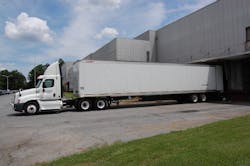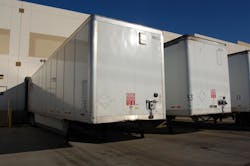The purportedly slow demise of the manufacturing and logistics sectors of the U.S. economy since the start of the 21st century may not only be greatly exaggerated but may in fact be wholly inaccurate, if new analysis conducted by researchers at Ball State University is to be believed.
That could be trucking companies – especially small operators – on much surer freight footing than they may think, if the conclusions of the school’s study is correct.
According to the new report Manufacturing and Logistics: A Generation of Volatility & Growth compiled by the Ball State Center for Business and Economic Research (CBER) at Ball State University, along with Conexus Indiana, U.S. manufacturing production actually increased 11% since the infamous dot.com bust period of 2000 to 2003, with further increases following the ensuing economic turbulence of the 2001 and the “Great Recession” of 2007 to 2009.
“According to folklore, this has been a terrible generation for manufacturing and those who move goods,” noted Michael Hicks, CBER‘s director and the university’s George and Frances Ball distinguished professor of economics and business research.
“That isn’t really what the data says,” he stressed. “Indeed, 2015 was a record manufacturing production year in inflation-adjusted dollars. While 2016 fell just short with some weakness in the first and second quarter, 2017 looks to be a new record year.”
Indeed, the Leading Economic Index (LEI) charted by the Conference Board for the global economy shows a widespread “strengthening” occurring around the world, especially in emerging markets.
While most of 2015 and 2016 showed a weakening in business cycle dynamics – to the point that recession risk was elevated in late 2015 and early 2016 – the recent turnaround reflects a confluence of “positive forces,” the group said, with the current cyclical upswing and recovery in productivity will raise global growth to 2.9% in 2017, up from 2.5% last year."Strong consumer and business confidence, strengthening stock markets, a turnaround in the global industrial cycle, and a recent rise in the rate of global trade all point to strengthening cycle dynamics," noted Bart van Ark, chief economist of the Conference Board, in a statement.
Yet he also stressed that this recovery could “die out” if businesses do not accelerate investment levels.
"The current upside to growth opens the door for businesses to catch up on their digital transformation to strengthen their growth base and allow them to weather the longer-term, structural headwinds which remain," van Ark said, referring to medium-term challenges with regard to slowing labor supply and the slow pace by which new technologies translate themselves into a higher growth potential for the global economy.
CBER’s Hicks pointed out the most of the economic “confusion” surrounding the health of the manufacturing and logistics sectors is due to declining employment over the past generation.
“The fact is, manufacturing firms have become very lean, and productivity growth means more goods produced with fewer workers,” he added.
Three factors have contributed to that decline in employment, the study emphasized: the workforce is better educated and trained, increasing productivity; mechanization has displaced some workers; and improved processes, such Lean Six Sigma and other management methods, are increasing manufacturing production.
Since peak manufacturing employment in 1979, the U.S. has lost approximately 7.5 million manufacturing jobs but gained more than 9 million jobs in trade, transportation and utilities – the broadest measure of the logistics industry.
“Trade and productivity growth shifts job opportunities to other places and other sectors even as employment grows,” Hicks explained. “We are at peak U.S. employment right now.”
Productivity is also a critical metric underpinning the Conference Board’s outlook.
The group said global labor productivity growth is projected to reach 1.9% for 2017, distributed fairly equally across mature economies – with increases from 0.5% in 2016 to 1% in 2017 on a per person employed basis and from 0.8% in 2016 to 1% in 2017 on a per working hour basis – and in emerging markets as well, increasing from 2% in 2016 to 2.7% in 2017 on a per person employed basis.
That implies that productivity growth in 2017 will account for almost two-thirds of GDP growth in 2017, the Conference Board noted, compared to less than half in 2016.
About the Author
Sean Kilcarr
Editor in Chief
Sean Kilcarr is a former longtime FleetOwner senior editor who wrote for the publication from 2000 to 2018. He served as editor-in-chief from 2017 to 2018.

